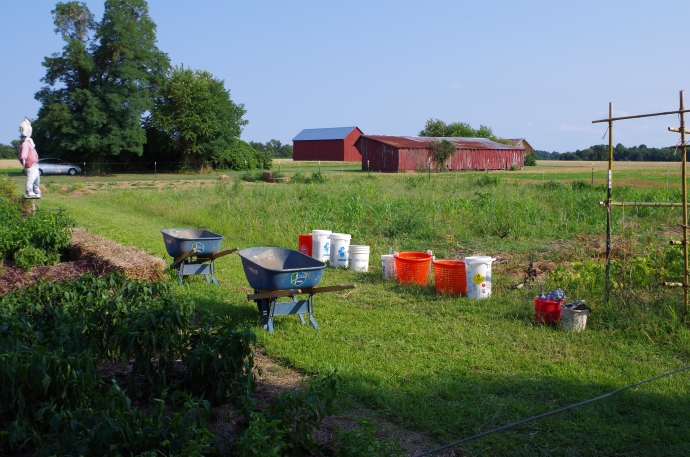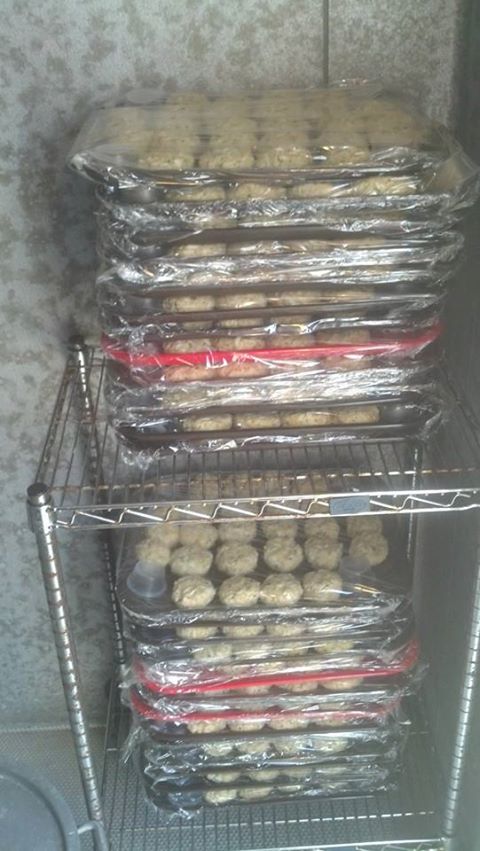So after a solid three weeks of working and working and not taking a break, I have taken a few days off and dedicated a good part of today to finally getting to go see and learn about historic Saint Marys’ City, which was the fourth permanent English colony in the New World after being established in 1634. In the below aerial photograph, my house is visible on the right side of the rightmost dotted red line, at the corner of the two roads, just to give you a sense of our immediacy to the historic city limits:

A map of the probable historic city atop the current layout of the area
We started first in the visitor’s center, a handsome little blue barn within which was a small exhibit that stepped us through the major historical moments of the city in its initial form (arrival in 1634 until the functional abandonment of the city in the 1690s, when the capital of Maryland was moved to Annapolis for religious and political reasons after the English civil war had ended). The area was empty of most human habitation until 1774 when two brothers purchased nearly all of the original property, and at that point began to build it up again. But that is another story – this day was about the initial city; and so we embarked out into the oppressive heat and humidity, to do the walking tour of our neighbors, the historic city.
Woodland Indian Hamlet
The first stop on our walking tour after the visitor’s center was the Woodland Indian Hamlet – a small set of authentically constructed huts in the style of the Yaocomico tribe which was native to this area when the settlers arrived. Unlike so many of the other tales of initial contact between Europeans and natives, this situation was HIGHLY beneficial to both sides. The Yaocomico were already planning on departing because of raids from a more aggressive neighboring tribe… and so when the settlers arrived, the tribe saw both a new buffer against the marauders AND they were able to “sell” the houses and fields they were planning on abandoning. So the tribe came out at a significant, genuine profit – and the settlers arrived with all the wrong crops for the area and its weather, as well as a limited supply of building materials – and instead were able to begin the colony with houses and fields in place from the beginning!

reproduction of a Yaocomico hut and vegetable garden
We were shown inside the huts (I am not sure of the spelling, but in the Algonquin tongue I believe these are called “wichuts” which means “we live here”), and it was remarkable how the walls made of dried reeds which overlapped were allowed almost all of the breeze into the house – while the thicker roof bundles of reeds kept sun and rain alike out of the area.
The guide also explained to us how homes for the Yaocomico tribe in the region were solely for sleeping and the storage of gear – and that they kept a fire burning year round inside each, both for warmth in the winter and for using smoke as bug repellant in the summer… but this also had the side effect of smoking all food stored and thus prolonging its shelf life! Everything else, the natives did outside.
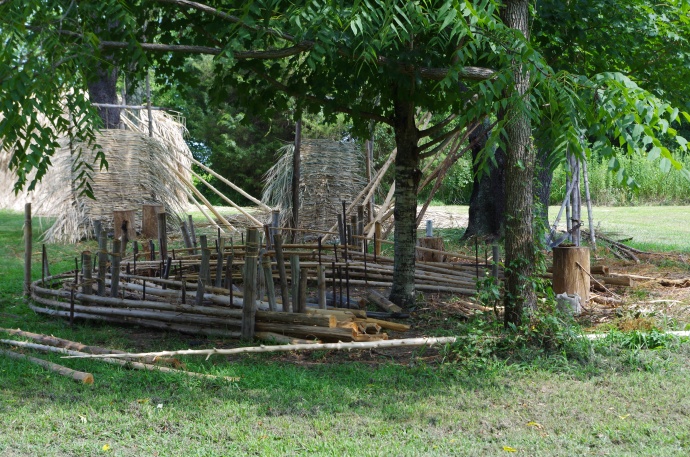
Modern day construction of the huts includes steel rebar, to make jigs to bend the posts more easily. The vertical ropes are used to tightly bunch the reeds into the mats used atop the roof (making them surprisingly waterproof, it turns out)
It was interesting to hear that geologically, the stones and metals available to the Yaocomico were all far too soft to make useful tools out of in most cases – copper was apparently easily obtained, but is malleable enough to be a decorative item. As such, we were shown how this tribe hedged its bets on the use of fire; as seen below, refining its use to the point of burning down a tree, and part of its insides, with careful placement of fire, in order to construction a viable canoe. Oyster shells were plentiful as the tribe loved to eat them, and became a great scraping tool to ensure the fire burned evenly:

REAL canoes are made by burning down the tree, burning out the interior, and using oyster shells to scrape them into shape (all because neither stone nor metals in this area of Maryland were sufficient for tool making)
The first Catholic building in the New World
Stepping back onto the trail (and thusly into the hated direct sunlight anew, oy vey), we came out into the so-called Chapel Field – probably so-called because it is the field around the reconstructed chapel! This building was done in the early 1990s, but is done in the style and indeed atop the original foundations of the first church here – a wooden structure which is said to have burned down in 1645 or thereabouts. Jesuits not being particularly interested in quitting, they built the initial brick structure atop the same foundation in 1667… and it was a viable church until the mid-1690s, when the famed Maryland Religious Toleration Act was repealed and Catholics were again persecuted.

The first Catholic building in the New World, rebuilt in the 1990s atop the foundations of the original building
The building aims to be, as are the other reconstructions on the Historic holdings, as close as possible to the original, genuine article. This means, for instance, that they have held off on doing the internal furnishings until they can afford to do 17th century style reproduction pews and pulpit:

The spartan interior of the chapel, with an average Nathan for scale purposes
A bit macabre perhaps, but in the process of excavating the original foundations in order to lay the new ones, there were three lead coffins discovered. A long story short, Project Lead Coffins (they were blunt if not creative, I suppose) was the process of excavating them, learning as much as they could (and their conclusion is that they found the burial place of Philip Calvert, the fifth governor of Maryland. After careful study, the coffins were reinterred and are back in their original resting places before the new building went up above them:

The titular 3 caskets found in “Project Lead Coffins” beneath the original chapel’s foundation
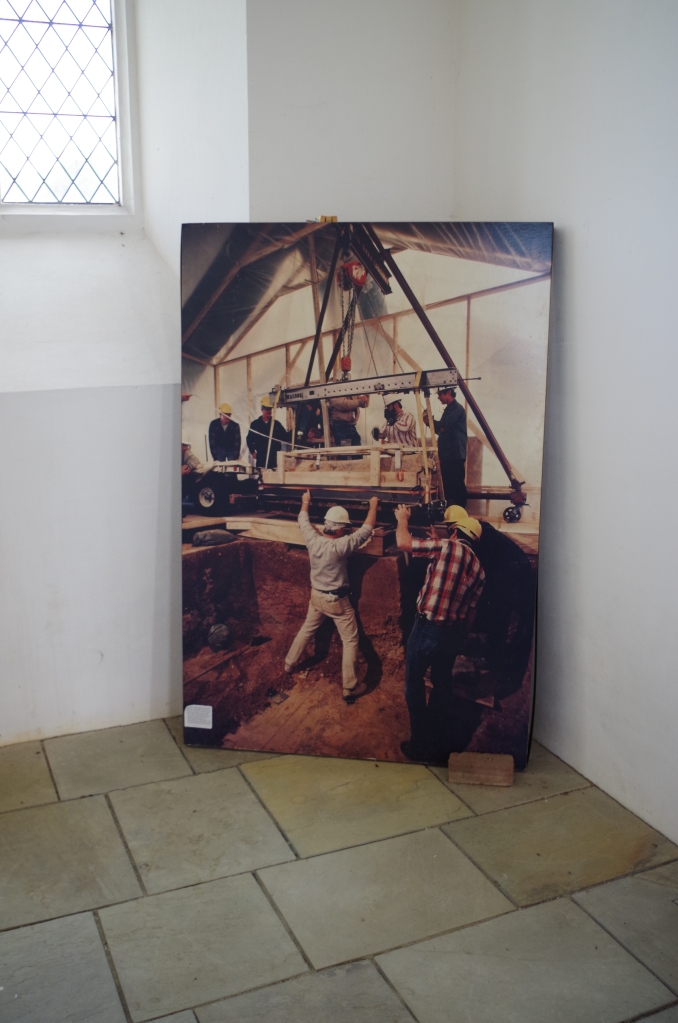
One of the few decorations present shows the exhumation of the coffins above where it occured, prior to the building of the new chapel building
Outside of the chapel proper is a small pavillon which houses a variety of informative boards, only one of which I as a Lutheran was obligated to reproduce here, in order to remind you that the ~Catholic Menace~ must be fought tooth and nail:
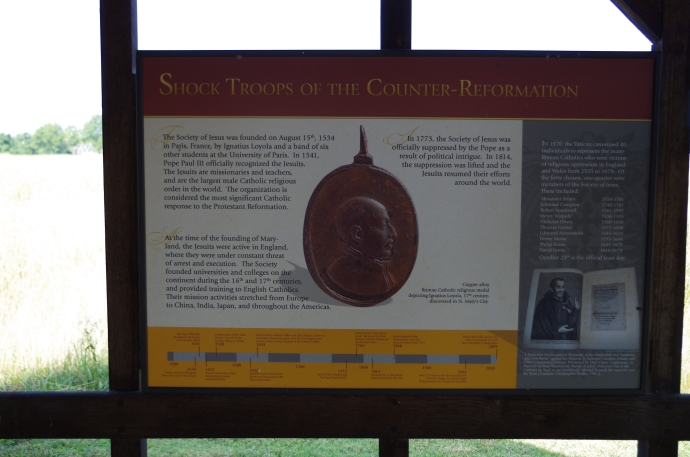
the Lutheran in me began to bark like a dog at this Jesuit counter-Reformation propaganda, to be honest
Mackall Barn
Just down the path was the historically anomalous building on the property – the Mackall Barn. Constructed in 1785, it is the oldest original structure still standing in the area – and it is an excellent example of Chesapeake area construction cleverness (he alliterated, quite alliteratingly). The internal timbers and rafters are almost all original… which, given the hurricanes in the area and the generally humid weather, is a surprising fact, and speaks highly of best practices in building in the first decade of the American republic!

the Mackall Barn from across the field
It is fascinating to note that there was one other standing building within the original Saint Mary City limits was a plantation built in 1840… which later became an inn. I am told that the Inn at Brome Howard, as it came to be known, was actually lifted onto a huge wheeled platform and was moved a few miles away (interestingly, onto the ruined foundation of the second governor of Maryland’s home) because the Inn was standing atop the ruins of the original 17th century state house! It is tough to keep all the layers in order, I can assure you.

As a general point, I struggle to read most signage without a supremely sardonic tone. But this is just gold: WHY IS THIS BARN HERE, indeed
The Maryland Dove
Mentioned in a few of my prior posts, and always seen from across the water atop the Church Point peninsula, is the Maryland Dove replica. A working sailing ship which is built to the specifications of one of the two ships which originally landed in Maryland back in the day. There was a huge group of kids doing their tour when we stopped there, so we didn’t go aboard – but the chance to get a decent photo finally was enough for me!

the Maryland Dove and some sort of small sibling ship
Calvert House and the town center
Around the town (which was laid out as two right triangles intersecting in the middle of town) sit a variety of those frame-only wooden “structures” showing where original buildings stood… but in the case of a very few buildings, some remains are still standing. The Calvert family house, for instance, has a few brick chimney or fireplaces still visible.

Some of our neighbors – the frame-only “houses” showing where the original structures in the 1630s to 1690s stood
The Calvert House in particular is a hot spot at the moment for archaeology, because Maryland is planning to do a historically accurate reconstruction of it, where it sat, beginning next year. Thus, on our walking tour we saw all sorts of archaeological gear in place and awaiting eager hands:

The actual Calvert House site is under frantic archaeological excavation, before they begin construction on the reproduction of it, atop its original site. The trays atop the sawhorses are used to sift dirt off of artifacts… I know this because Historic stores the rest of them in the shed behind my house… and they have been used by the college’s gardeners to dry garlic and onions!
It is also interesting to note that the first printing press in the southern colonies was in Saint Mary City, and a reproduction of it and the house it sat in is still there today (including some of the lead typeset they found in the ground):

A reproduction of the printing press which helped the city in its original purpose as the capital of Maryland
Our loop back towards the visitor’s center gave us a good view of house positioning versus the Mackall Barn and then the chapel in the far background – all told, Saint Mary City was only slightly smaller than its tiny size today, when it was originally settled:

View of the Mackall Barn and the chapel, from within the presumed town center
Reconstructed State House
The original 1676 statehouse was torn down in the mid 1800s, because it was an unsafe building… and its bricks were the basis for the Trinity Church building in which my internship is now situated! But Maryland for the tercentenniel in 1934, did a reconstruction of the original statehouse. In this case, it sits in a slightly different spot, for one major reason – many many decades ago, the vestry (lay leadership) of the church decided to let the cemetery extend over onto the original building’s location… and there is no chance of overlaying those graves with a reconstruction.

the reproduction of the original State House (the bricks from the original were used to build Trinity Church, my internship site, in 1876)
If memory serves, this was almost the exact location where Old Bay was decreed to be the divine force which watches over and protects Maryland and Marylanders (and also seals the doom of those sea spider bastards erroneously called “crabs”):

The rather impressive governor’s desk in the State House. I hope to have an office like this some day soon.
Godiah Spray tobacco plantation
The last stop of the day was a bit further off from the rest – and the only portion of the entire grounds which has reenactors who stay in character the whole time. Thus we had Godiah Spray himself show us around his abode and bemoan the fluctuating costs of his cash crop, tobacco.

The frontmost tobacco drying barn on the Spray property
By this point, the day had become oppressively hot, so we were just glad to be in the shade… but it was interesting to actually see a functioning tobacco farm (even at small scale, meant to be a demonstration)!

I have learned about tobacco as a cash crop since 2nd grade I think… but this is the first time I have seen it growing in person
We also considered, since we live in a historic Maryland house, that perhaps we ought to revert back to Maryland’s original “rich person bedding” as Mr. Spray bragged to us.
I think we’ll pass:
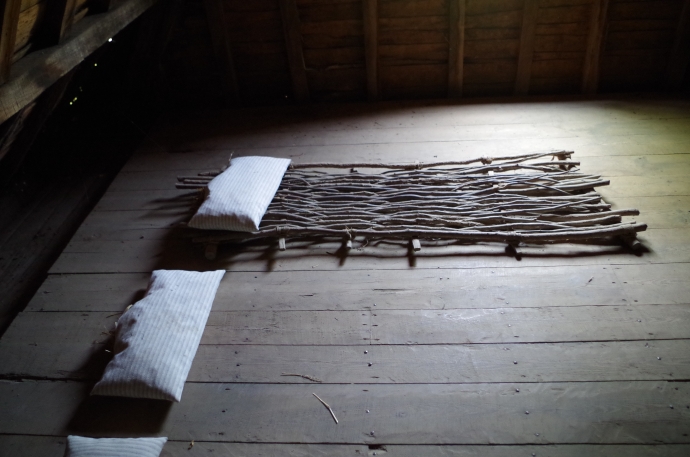
the beds in the Godiah Spray house were the definition of decadent luxuriousness, I should think. They had both the “directly on wooden floor” and also the rarer “bundle of pointy sticks” versions of bedding.
________
A great and busy day, but I am glad to have finally seen the historic Saint Mary City site in person!!












